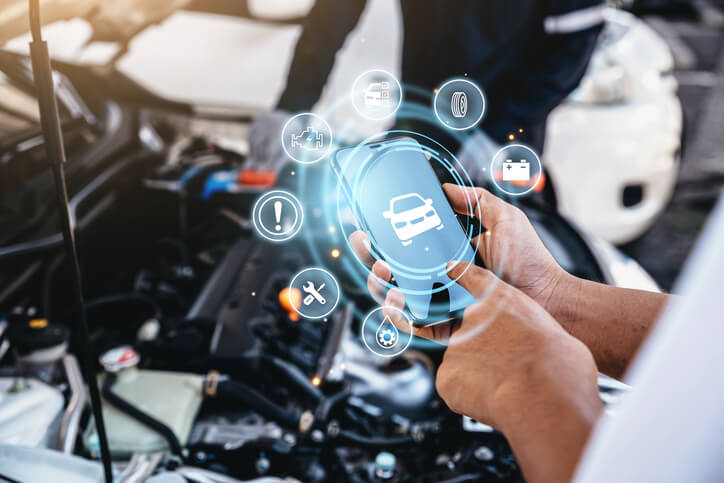The integration of AI automatic transmission optimization is reshaping the world of vehicular technology. In recent years, there has been a significant shift towards using artificial intelligence to enhance the performance and efficiency of vehicles. This transformation is not just about making cars faster or more fuel-efficient; its about creating a seamless driving experience that is both intuitive and adaptive to our modern world.
With AI automatic transmission optimization, vehicles can now adjust their gear shifts automatically, optimizing for speed, fuel consumption, and overall driving comfort. This article delves into how this exciting technology works, its benefits, and what it means for the future of automotive engineering.

Understanding Automatic Transmission Systems
Before diving into the integration of AI, it’s crucial to understand what automatic transmission systems are. Unlike manual transmissions, automatic systems handle the gear shifts based on the vehicle’s speed and engine load.
This process is traditionally managed by a hydraulic system, which, although reliable, can lack the precision and adaptability offered by modern AI solutions.
The Role of AI in Vehicle Technology
Artificial intelligence is a revolutionary force in automotive technology. Its advantages are numerous when applied to automatic transmission. By analyzing vast amounts of data and learning in real-time, AI can predict the optimal moments to shift gears, adjust performance settings, and more.
The impact of AI extends beyond just transmission systems. From automated driving aids to maintenance alerts, the role of artificial intelligence in automotive systems is expanding daily.
Benefits of AI in Transmission Systems
Improved Fuel Efficiency
One of the most significant advantages of AI automatic transmission optimization is improved fuel efficiency. AI systems can calculate the most fuel-efficient gear changes in real-time, which reduces unnecessary fuel consumption and decreases emissions.
Enhanced Driving Experience
AI contributes to a smoother driving experience. By learning a driver’s habits and preferences, AI can tailor gear changes to ensure a more comfortable and responsive driving experience.
Predictive Maintenance
Another remarkable benefit of integrating AI with transmission systems is predictive maintenance. AI can detect anomalies and wear in the transmission system, alerting drivers to potential issues before they become significant problems. This proactive approach can prevent costly repairs and extend the life of the vehicle.
AI Technologies in Automatic Transmission
Machine Learning Algorithms
Machine learning algorithms are at the core of AI automatic transmission optimization. These algorithms analyze data from various sources, including engine performance and driver behavior, to make adaptive decisions on gear changes.
Neural Networks
Neural networks enable advanced pattern recognition and predictive analytics, which are pivotal for understanding and anticipating optimal transmission shifts in real-time.
Integration with IoT
The Internet of Things (IoT) plays a crucial role in connecting AI-driven transmission systems with other vehicular systems. IoT facilitates seamless data exchange, allowing AI to access real-time information about different vehicle components and the driving environment.
Learn more about AI’s impact on automotive design to understand the broader applications of these technologies.
Challenges of Implementing AI in Transmissions
Technical Hurdles
While the benefits are clear, implementing AI in automotive systems is not without challenges. It requires significant investment in infrastructure and a skilled workforce adept at developing and maintaining these advanced systems.
Data Privacy Concerns
As AI systems generate large amounts of data, addressing privacy and security concerns becomes increasingly important. Ensuring that driver data is used responsibly is key to maintaining public trust.
The Future of AI-Driven Transmissions
Continued Innovation
The future of AI automatic transmission optimization promises continuous innovation. As AI and machine learning technologies evolve, we can expect even more refined solutions that further optimize vehicle performance and enhance driver experiences.
Broader Industry Applications
Beyond the personal car market, AI-driven transmission systems are likely to influence other areas such as commercial fleets and logistics, leading to a broader industry-wide transformation.
Partnerships and Collaborations
Collaboration between automobile manufacturers and tech companies will be crucial in advancing AI technologies. These partnerships will drive innovation and ensure that AI systems are safe, efficient, and accessible.
Conclusion
The integration of AI automatic transmission optimization represents an exciting leap forward in automotive technology. By enhancing performance, improving fuel efficiency, and offering predictive maintenance, AI is set to redefine how we think about driving and vehicle management.AI in auto repair is just one example of its expanding influence, showcasing a future where technology and mobility go hand in hand.

FAQs About AI Automatic Transmission
What is AI automatic transmission optimization?
AI automatic transmission optimization involves using artificial intelligence to enhance the performance of a vehicle’s transmission system by making smarter, more efficient gear shifts based on real-time data.
How does AI improve vehicle efficiency?
AI improves vehicle efficiency by optimizing gear shifts, reducing fuel consumption, and providing predictive maintenance alerts to prevent significant mechanical issues.
What challenges exist in implementing AI in automatic transmissions?
Challenges include technical complexities, the need for significant investment in infrastructure, and addressing data privacy concerns to protect driver information.





